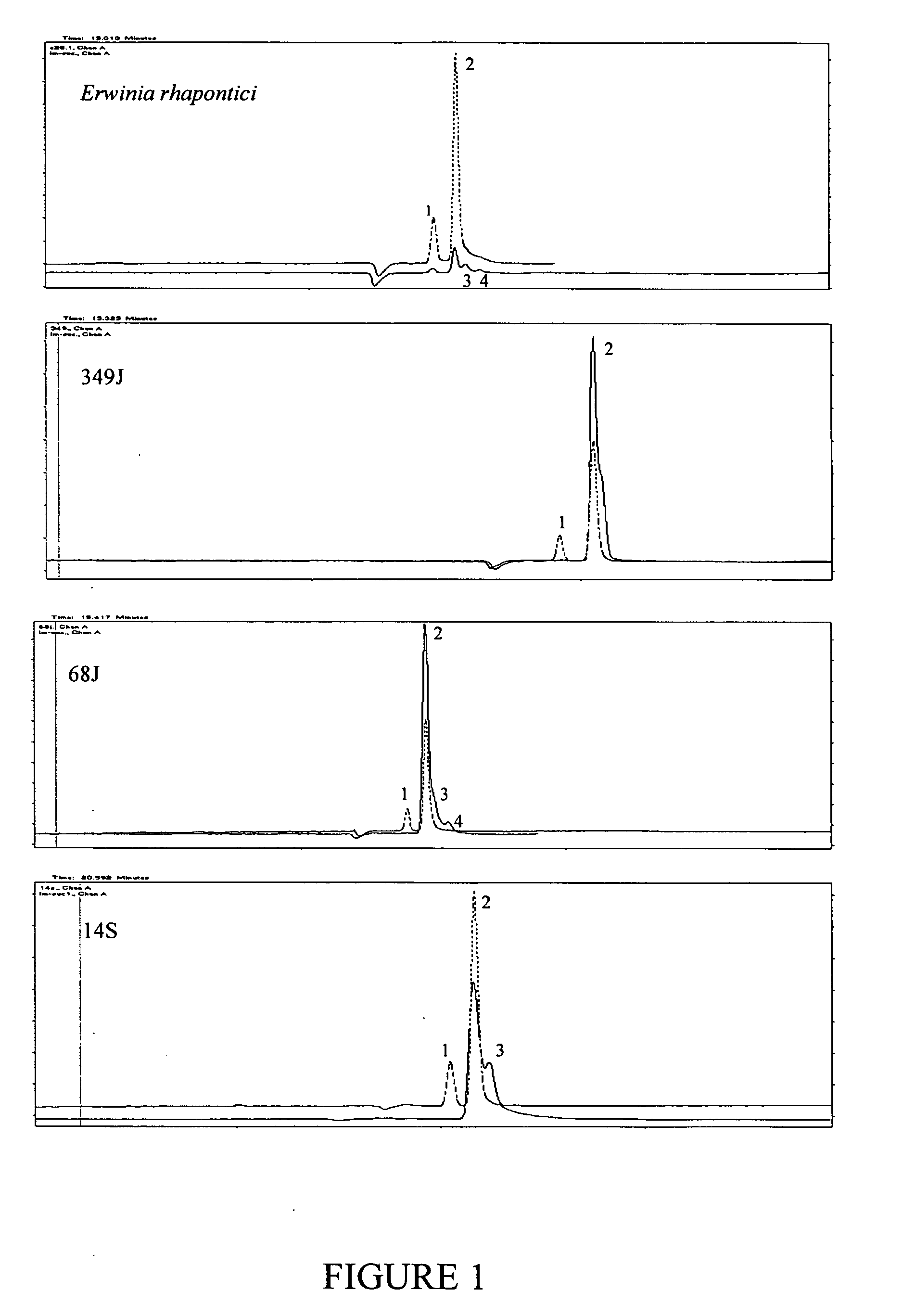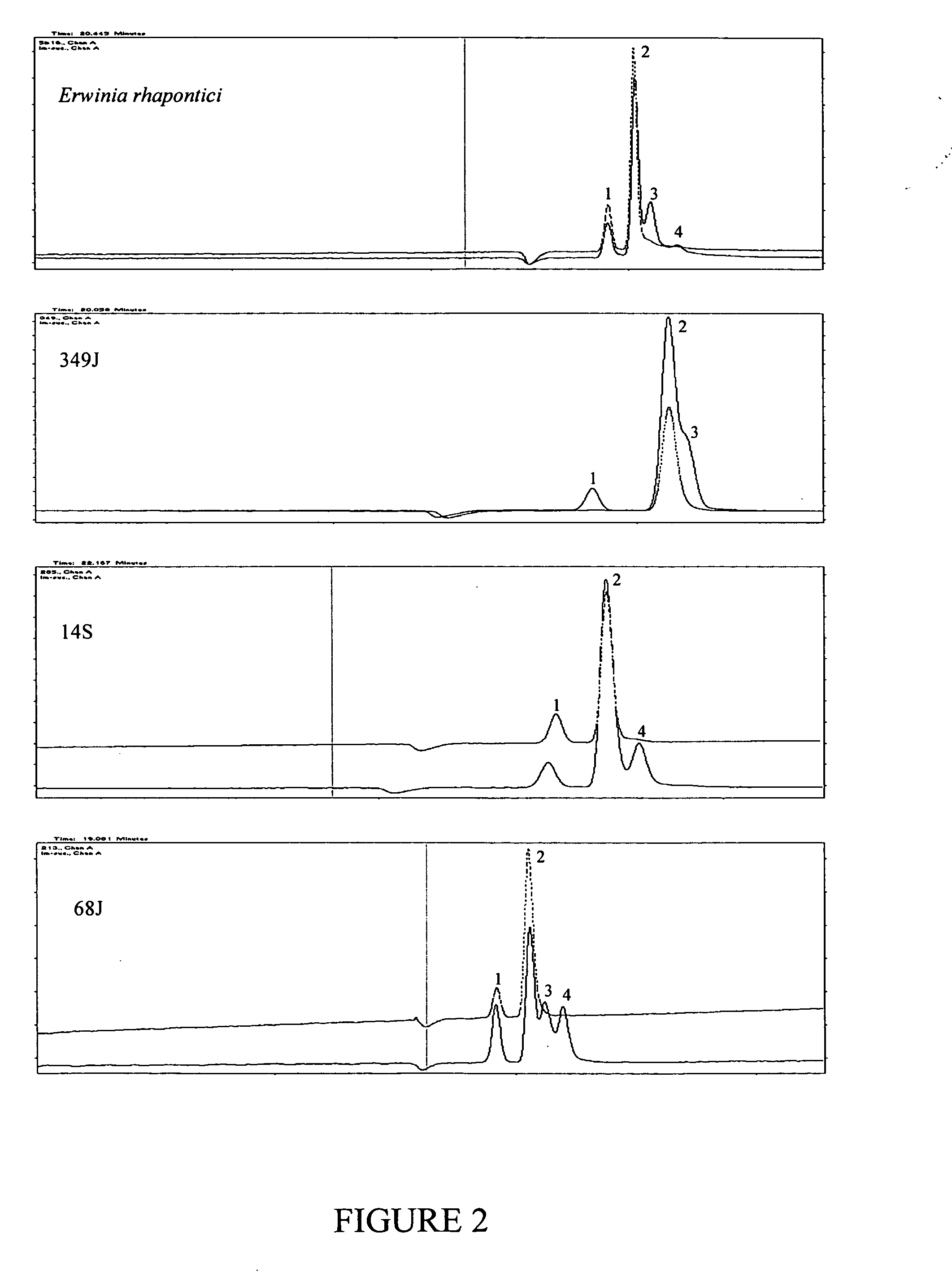Isomaltulose synthases, polynucleotides encoding them and uses therefor
a technology of isomaltulose and polynucleotide, applied in the field of enzymology, can solve the problem of not encoding sucrose isomerase, and achieve the effect of superior sucrose isomerase activity
- Summary
- Abstract
- Description
- Claims
- Application Information
AI Technical Summary
Benefits of technology
Problems solved by technology
Method used
Image
Examples
example 1
Isolation of Sucrose Isomerase-Encoding Polynucleotides Using Oligonucleotide Primers Based on Regions Specified by Mattes et al
[0359]This strategy was tested on a known sucrose isomerase expressing bacterium (Erwinia rhapontici Accession Number WAC2928), and 30 additional independent bacterial isolates. Degenerate PCR primers were designed based on regions specified by Mattes et al. (supra) as conserved regions from their analysis of sucrose isomerase genes known to them.
[0360]Forward primer consisted of the sequence extending from nucleotides 139-155 of SEQ ID NO: 1, 5′-tgg tgg aa(a,g) ga(g,a) gct gt-3′ [SEQ ID NO: 38].
[0361]Reverse primer consisted of the sequence extending from nucleotides 625-644 of SEQ ID NO: 1, 5′-tcc cag tta g(g,a)t ccg gct g-3′ [SEQ ID NO: 39].
[0362]Bacterial genomic DNAs were used as templates for PCR. The genomic DNAs were extracted according to Ausubel et al (1989, supra). The PCR reaction was carried out in a final volume of 50 μl comprising 100 ng DNA,...
example 2
Functional Screening for Bacteria that Convert Sucrose to Isomaltulose
Bacteria Collection and Isolation
[0366]Bacterial samples were collected from a range of environmental sites selected for their potential to yield novel, sucrose metabolising bacteria. In particular, sites were chosen subject to periodic sucrose availability, which might favour organisms able to convert sucrose to storage isomers such as isomaltulose. Around 100 samples from sites in SouthEast Queensland were collected into MIM liquid culture. MIM is 0.2% isomaltulose (6-O-α-D-Glucopyranosyl-D-fructofuranose) plus MM (minimum medium containing 0.5% Na2PO4, 0.45% KH2PO4, 0.1% NH4Cl, 0.05% MgSO4.7H20, 0.005% Ferric Ammonium Citrate and 0.0005% CaCl2). Following growth on an orbital shaker at 200 rpm for 2 hours at room temperature, 100 μL samples were streaked onto MSM (MM plus 4% sucrose) agar plates and grown overnight at 28° C. Following this two-stage enrichment, morphologically different colonies were isolated o...
example 3
Sample Preparation for Aniline / Diphenylamine Assay
[0367]The cultures grown overnight in 5 mL SLB were centrifuged at a speed of 10,000×g for 10 minutes at room temperature. The supernatant was carefully poured off and 2 mL of a 50% sucrose solution in citrate / phosphate buffer (pH6) was added. Cells were gently resuspended and incubated at 28° C. in a shaker for 48 hours. Following incubation, 1.5 mL culture was transferred to a fresh Eppendorf tube, boiled for 15 minutes at 100° C. and centrifuged at 16,000×g for 20 minutes at room temperature. Without touching the pellet, the supernatant was saved to a fresh tube for aniline / diphenylamine assay and capillary electrophoresis.
PUM
 Login to View More
Login to View More Abstract
Description
Claims
Application Information
 Login to View More
Login to View More - R&D
- Intellectual Property
- Life Sciences
- Materials
- Tech Scout
- Unparalleled Data Quality
- Higher Quality Content
- 60% Fewer Hallucinations
Browse by: Latest US Patents, China's latest patents, Technical Efficacy Thesaurus, Application Domain, Technology Topic, Popular Technical Reports.
© 2025 PatSnap. All rights reserved.Legal|Privacy policy|Modern Slavery Act Transparency Statement|Sitemap|About US| Contact US: help@patsnap.com



